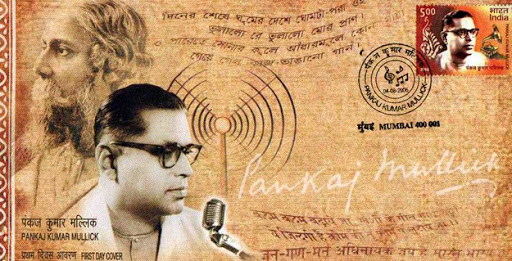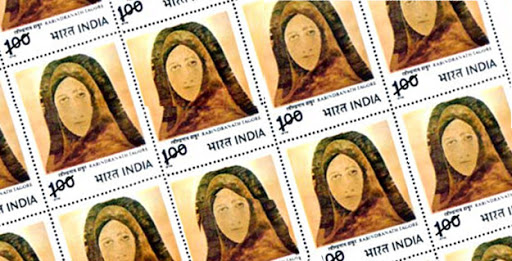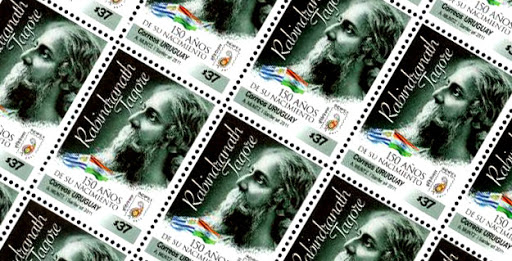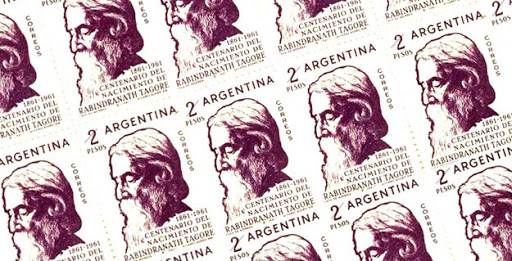The Israel Post to mark International Year Of Chemistry released two stamps featuring protein structures on 4 January 2011. Israeli Scientists played a very vital role in research of Ribosome and Ubiquitin
The 4.20-shekel stamp features the ubiquitin, a protein destructor and the 6.10-shekel stamp features the Ribosome, a protein constructor
UBIQUITIN : Proteins Labeled For Destruction
Stamps From Israel Post Depicting Ubiquitin
Aaron Ciechanover and Avram Hershko of the Israel Institute of Technology Along with Irwin Rose Discovered Ubiquitin
Proteins make up all living things both plants and animals.Hence Proteins have a significant role to play in human life. In the past few decades biochemistry has come a long way towards explaining how the cell produces all its various proteins.
But as to the breaking down of proteins, not so many researchers were interested. Aaron Ciechanover, Avram Hershko and Irwin Rose at the start of the 1980s discovered one of the cell's most important cyclical processes, regulated protein degradation. For this, they are being rewarded with Nobel Prize in Chemistry in 2004.
The scientists trio made the world realize that the cell functions as a highly-efficient checking station where proteins are built up and broken down at a very fast rate.The degradation is not indiscriminate but takes place through a process that is controlled in detail so that the proteins to be broken down at any given moment are given a molecular label, a 'kiss of death', to be dramatic. The labelled proteins are then fed into the cells' "waste disposers", the so called proteasomes, where they are chopped into small pieces and destroyed.
The label consists of a molecule called ubiquitin. This fastens to the protein to be destroyed, accompanies it to the proteasome where it is recognized as the key in a lock, and signals that a protein is on the way for disassembly. Shortly before the protein is squeezed into the proteasome, its ubiquitin label is disconnected for re-use.
RIBOSOME : TRANSLATES DNA CODE INTO LIFE
Nobel Prize in Chemistry 2009 was awarded to Venkatraman Ramakrishnan, Thomas A. Steitzand and Ada E. Yonath for having showed how the ribosome appears like and how it works at the atomic level. All the three scientists used a method called X-ray crystallography to map the position for each and every one of the hundreds of thousands of atoms that make up the ribosome.
Inside every cell there are DNA molecules which are the blueprints for how a human being, a plant or a bacterium, looks and functions.These blueprints get transformed into living matter through the work of ribosomes. Based upon the information in DNA, ribosomes make proteins: oxygen-transporting haemoglobin, antibodies of the immune system, hormones such as insulin, the collagen of the skin, or enzymes that break down sugar. There are tens of thousands of proteins in the body and they all have different forms and functions. They build and control life at the chemical level.
An understanding of the ribosome's innermost workings is important for a scientific understanding of life. Many of today's antibiotics cure various diseases by blocking the function of bacterial ribosomes. Without functional ribosomes, bacteria cannot survive. This is why ribosomes are such an important target for new antibiotics.
Three Nobel Laureates generated 3D models that showed how different antibiotics bind to the ribosome. These models are now used by scientists in order to develop new antibiotics, directly assisting the saving of lives and decreasing humanity's suffering.
First Day Cover On The Occasion Of International Year Of Chemistry Depicts The Word Chemistry In Different Languages
A Sheetlet Of Stamps On International Year Of Chemistry With Tabs Featuring IYC2011 Logo
RELATED LINKS :
- Nobel Prize Site : Click Here
- Aaron Ciechanover Autobiography : Click Here
- Avram Hershko Autobiography : Click Here
- Irwin Rose Autobiography : Click Here
- Venki Ramakrishnan : Click Here
- Thomas A Steiz : Click Here
- Ada E. Yonath :Click Here











0 comments:
Post a Comment